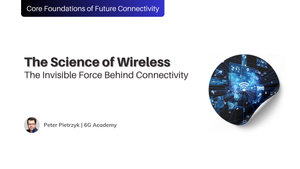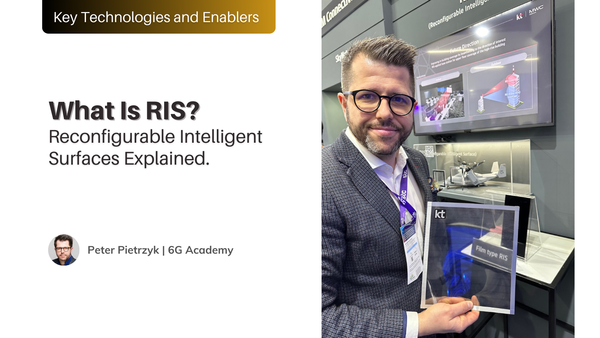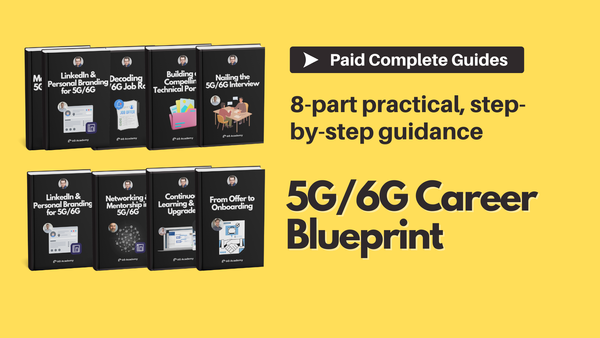Following the latest 6G Whitepaper published by Telecommunications and Digital Government Regulatory Authority (TDRA) and Khalifa University in UAE, the UAE is not just keeping pace with global technological advancements but is at the forefront, driving innovation and setting ambitious goals for the next generation of wireless communication. This article delves into the UAE's strategic vision for 6G connectivity, exploring key projects, influential players, and the nation’s roadmap towards becoming a hub for 6G innovation.
The 5G Foundation and the Leap to 6G
The UAE's journey towards 6G began with its pioneering efforts in 5G. In 2016, the Telecommunications and Digital Government Regulatory Authority (TDRA) launched a comprehensive 5G project, establishing committees focused on spectrum, network, and verticals. By 2018, the UAE had successfully launched a commercial 5G network, making it one of the first countries globally to achieve this milestone. This robust 5G infrastructure laid the foundation for the UAE's ambitious 6G plans, which aim to address the growing demands for higher data rates, lower latency, and increased connectivity.
The Strategic Vision for 6G
The UAE's vision for 6G is multifaceted, aiming to enhance the quality of life, promote research and development, maintain a prominent role in global standardization, and lead the Middle East in 6G innovation. Here are the strategic objectives:
- Enhancing Quality of Life and Competitiveness: The UAE aims to leverage 6G technology to revolutionize sectors like healthcare with telehealth advancements, enable smart homes for enhanced convenience and security, and transform entertainment and professional fields with holographic communication and XR/VR technologies.
- Promoting Research and Development: The UAE aspires to become a global hub for 6G research. By heavily investing in cutting-edge technologies and fostering collaborations between academia, industry, and government, the UAE is creating an ecosystem that drives innovation and positions the country as a pioneer in telecommunications.
- Global Standardization Leadership: The UAE is committed to maintaining its role in global standardization through active participation in the International Telecommunication Union (ITU) and other global bodies. By contributing to the development of 6G policies and regulations, the UAE aims to influence the global 6G landscape.
- Regional Leadership: Building on its success with 5G, the UAE seeks to lead the Middle East in 6G adoption and innovation. The country aims to set a high benchmark for technological advancement, economic growth, and digital transformation in the region.
Key Players and Projects
Several key players and projects are driving the UAE's 6G ambitions:
- Khalifa University 6G Research Center: This center focuses on three main themes: Native AI, Sensing and Localization, and Broadband Connectivity. It aims to pioneer research in these areas and contribute to the global 6G knowledge base.
- Technology Innovation Institute (TII): TII is at the forefront of several innovative projects, including real-time point cloud adaptive streaming for VR environments, VR-based fleet control systems, and large generative AI models for telecommunications.
- Etisalat by e&: This telecom giant is enhancing its existing 5G network and rolling out 5G-Advanced technologies. Etisalat by e& is also exploring 6G-enabling technologies such as Reconfigurable Intelligent Surfaces (RIS) and collaborating with partners on advanced research.
- Dubai Metaverse Strategy: Announced by the Dubai government, this initiative focuses on fostering innovation in XR/AR/VR/MR services, digital twins, AI/ML, IoT, and blockchain. The strategy aims to establish a metaverse ecosystem that supports 6G development.
Potential Live Trials Leading to 6G
The UAE is actively engaging in several potential live trials to pave the way for 6G technology. These trials are crucial in understanding and implementing the next generation of connectivity:
- Implementation of Intent Driven Orchestration: Utilizing artificial intelligence to optimize network and compute resources, improving energy efficiency and asset utilization.
- Cloudification in Network Domains: Virtualizing the radio access network, edge cloud, and core on hybrid-cloud infrastructures, facilitating the deployment of diverse radio versions and vendors.
- Small Cell Deployments: Enhancing the current radio access network with higher bands, shifting from Cell-Centric to Subscriber-Centric approaches.
- Interoperability Solutions: Adopting technologies that enable interoperability between different telecom vendors, like open interfaces and open APIs, ensuring feedback from UAE market needs.
- Convergence of Network Cloud and General-Purpose Cloud: Integrating virtual network functions and generic cloud compute services catalogues.
- Edge Computing Cloud Architectures: Supporting network workloads, generic purpose compute workloads, and high-demand applications like VR, gaming, and AI.
- Fix and Mobile Backhaul Convergence: Efficiently managing the growing data demands, adopting virtual AGF for function aggregation.
- Network APIs and Smart NICs: Implementing open standard APIs and Smart NICs to reduce latency and enhance AI integration, ensuring security and low latency in 6G services.
- Advanced Telemetry and AI Integration: Utilizing energy-efficient solutions and AI for real-time decision-making in network and IT asset management.
The 6G Ecosystem Map v1.0
To understand the vast network of contributors and stakeholders in 6G development, the 6G Ecosystem Map v1.0 is an essential resource. This map highlights key players across various sectors:
- Regulatory & Standards Bodies: Ensuring global compliance, these bodies, including the FCC, ITU, and 3GPP, provide the frameworks essential for the deployment of 6G technology.
- Telecom Operators: Companies like AT&T, Verizon, and China Mobile are spearheading the deployment of 6G networks.
- Technology Providers: Industry leaders such as Ericsson, Nokia, and Huawei are building the backbone of 6G networks.
- Device Manufacturers: Companies like Apple, Samsung, and Qualcomm develop the end-user devices and components that enable 6G connectivity.
- Research & Academia: Institutions such as MIT and Stanford are conducting cutting-edge research that drives 6G innovation.
- Startups: Innovative startups like Edge Impulse and PsiQuantum bring fresh perspectives and solutions to the 6G ecosystem.
- Defense & Public Sector: Organizations like the DoD and SpaceX leverage 6G for secure, high-speed communication systems.
- Cloud, Edge Computing, Cybersecurity & NTN Communications: Providers like AWS and Palo Alto Networks ensure the infrastructure is secure and efficient.
This map not only provides a comprehensive overview of the 6G landscape but also helps identify key stakeholders and their roles, making it an invaluable tool for industry professionals and researchers.

A Personal Perspective
Having worked extensively with sensing and Software Defined Radio and Cognitive Radio for military applications, I can attest to the transformative potential of 6G. This technology will not only enhance communication capabilities but will also enable a new era of intelligent connectivity. The integration of AI, edge computing, and advanced sensing technologies will revolutionize how we interact with the digital world, providing unprecedented opportunities for innovation and development.
I highly recommend following Prof. Merouane Debbah, Chief Researcher of Digital Science Research Centre and the Artificial Intelligence Cross-Center Unit, TII, his publications, keynotes, and talks. Here is, one of the latest ones on 6G: From Connected Things to Connected Intelligence:
Conclusion
The UAE's strategic vision for 6G connectivity is a bold and forward-looking commitment that aims to revolutionize wireless communication and position the country as a global leader in this field. By leveraging its 5G foundation, fostering innovation, and collaborating on a global scale, the UAE is set to pioneer the future of 6G technology. As the world anticipates the arrival of 6G, the UAE's comprehensive roadmap serves as a blueprint for other nations aiming to embrace the next generation of connectivity.
Peter









